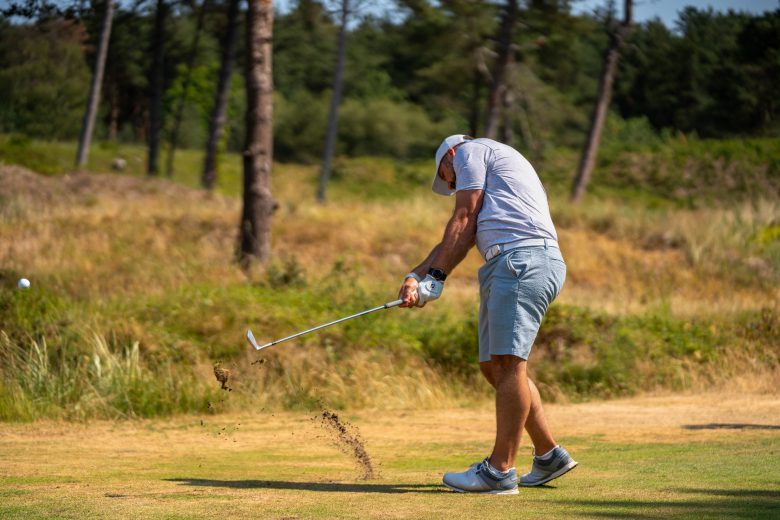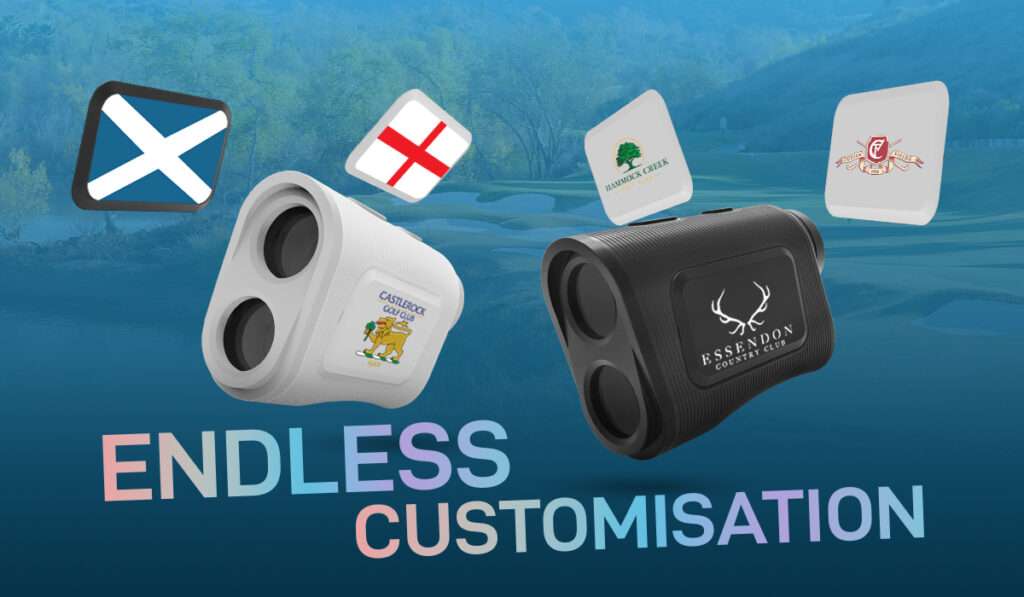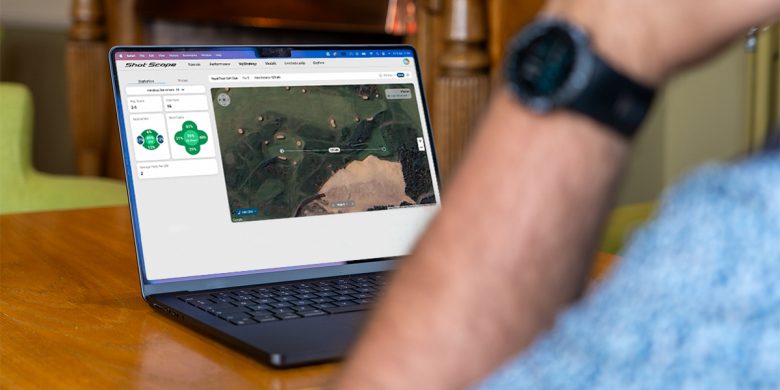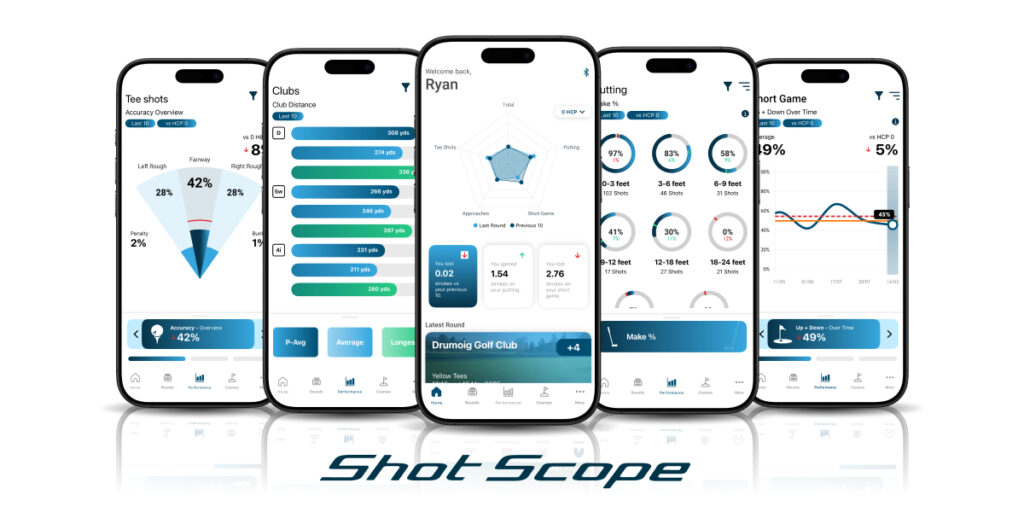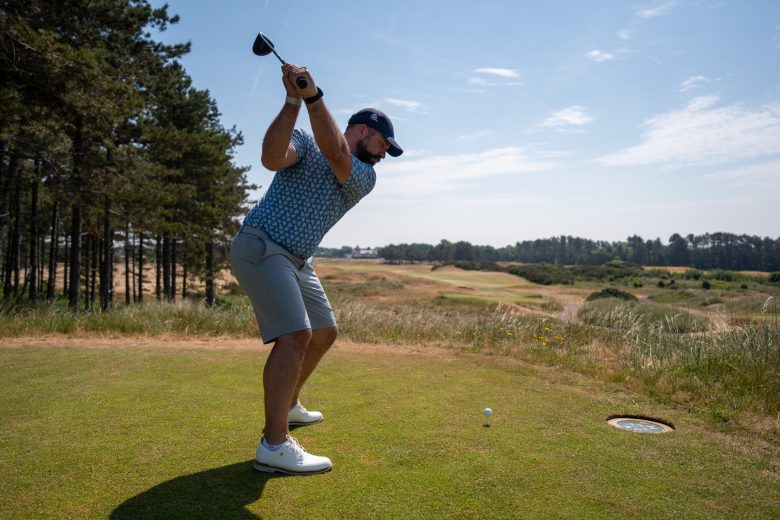What do I need to know before learning to play Golf?
Learning to play golf can be the most rewarding but frustrating goal you set yourself. There will be ups and downs, highs and lows, and at times you will ask yourself why you decided to embark on this journey.
But remember every golfer has experienced what you are going through, picking a club up for the first time, swinging it through the air and hoping the club head makes contact with the ball.
It will take time and effort but eventually it will all click into place and you will soon understand why golf is such an addictive sport.
And if it doesn’t go quite to plan take some advice from golf legend, Gary Player.

In this article we answer the top questions asked by beginner golfers to help you conquer your goal of making it around 9 or 18 holes.
Do I need lessons from a golf coach?
Booking a few lessons with a qualified PGA coach to nail the basic fundamentals of golf is a great place to start. This will avoid you picking up bad habits that become ingrained in set up and help you improve faster than figuring it out on your own.
Although, golf lessons can be expensive and you will need to work out how much time and money you want to dedicate to your new hobby. Buying a block of 5 or 10 one to one lessons is the best way to progress quickly but if you want to learn golf on a budget there are some other options available.
Most golf clubs or ranges offer group lessons such as ladies evening classes or seniors sessions for a small group of beginners to learn together. These are more affordable, but the downside to this type of lesson is the coach cannot pay as much attention to you individually.
The internet is filled with golf instruction videos. However, be wary of listening to too many different instructors on YouTube – you don’t want to confuse yourself). You can also take online golf lessons via websites such as skillest.com to access world-class golf instructors at an affordable price. Shot Scope’s golf eBooks can also come in handy!
Whatever route you take these first lessons will set you up for success!
What golf equipment do I need to get started?
Under the rules of golf, you’re allowed a maximum of 14 clubs in your bag but realistically you will likely only use 6-8 clubs while you are learning. A half set that includes a driver, some mid irons, a pitching wedge and a putter is more than enough to get you started, and as a bonus it will be nice and light to carry.
Have a look in your garage or ask a family member if they have an old set you can borrow for a few rounds before investing in your own set of clubs. A great alternative is to visit a charity shop or a 2nd hand club dealer such as www.2ndswing.com (USA) golfclubs4cash.co.uk (UK) or golfbidder.co.uk (UK) where you can pick up a set of clubs to suit your needs and budget.
How do I build a consistent set up and golf swing?
Set up and a smooth tempo is key to the perfect swing and hitting more consistent golf shots, if you don’t focus on your set up early on in your game you will be making life on the course tough for yourself. Even small details can have a big impact on where your ball ends up on the course. A slight misalignment in your set up can result in a detrimental slice or hook.
To build a good set up takes time and effort. You will make mistakes and you need to correct these mistakes before it becomes second nature. Even the best golfers need to revisit their set up from time to time but there are some key fundamentals you should understand. Work with a golf coach to establish a good stance, understand ball position and develop a proper golf grip, a coach will also help you with alignment and aim points on the course.
How many lessons should a beginner take before hitting the course?
Stepping foot on the golf course for the first time can be an exciting but daunting experience as you move away from the comfort of the range where you have been learning. Once you have mastered a basic golf swing and set up, don’t delay progressing to the golf course. This will allow you to start putting your practice into play and learn other key fundamentals of the game such as short game, putting and course management.
There is no correct answer for how many golf lessons you will need, but as a general rule around 5-10 lessons should be enough for you to gain the knowledge required to navigate around a golf course. On your first trip go with an experienced golfer who can keep you right about the rules and etiquette of the game, plus they should be able to give you some advice to make your first round more enjoyable.
How does scoring in golf work and do I need to keep a scorecard?
Unlike other sports, in golf the lowest rather than the highest score. However the scoring itself can sound like a foreign language to those unfamiliar with the terminology.
The goal is to get your ball in the hole in as few strokes as possible. Every time you swing the club attempting to hit the ball you count this as a stroke. At the end of each hole tally up your strokes, and that’s your score for the hole. You may have to add additional penalty strokes if for example you lose a ball in water or trees. Once you’re finished your round, add up all strokes taken and this is your total score for the round.
Ideally you want to get as close to par or under par as possible to achieve the lowest score and have the best chances of winning your match. Every hole on the course has a par rating that is the number of shots a golfer is expected to take to play that hole. Adding the pars up for each hole gives you the course par rating that you are expected to play the golf course as a whole.
As a novice I am sure you have heard the terminology birdie or bogey!
Here is a quick guide to explain scoring in golf…
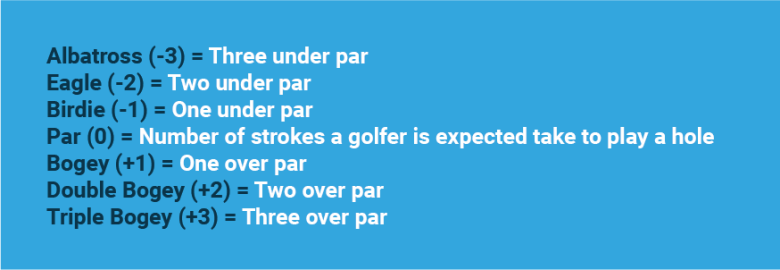
The scoring method mentioned above is called stroke play but there are many different formats used for keeping score when playing golf for example, match play, stableford and texas scramble.
When starting out we recommended keeping it simple and following basic stroke play scoring.
Golf has so many rules! How do I learn the basics and etiquette of golf?
The best way to learn the rules of golf is to play with experienced golfers and do what they do. Don’t be afraid to ask questions or make mistakes, it’s how every golfer has learned to play.
Here are some essential tips of golf etiquette to help you out:
1. The most important rule to know is Fore – As a beginner you are going to have a few stray shots, just remember to shout FORE if you see your ball traveling towards a group of people or hit it onto another hole on the course.
2. Be early for your tee time – You should arrive at the golf course at least 15-20 minutes before your tee time so you can check in, warm up and be ready on the first tee with no delay.
3. Avoid slow play at all times – There is no doubt as a newbie to golf you are going to take a little longer around the course than the pros! Don’t stress, take your time but if you are holding up golfers behind let them play through.
4. Repair your pitch marks on greens – A green full of ball marks can lead to missed putts!
You should always find and repair your ball marks, it is super easy to do so and keeps the course in good condition for everyone to enjoy.
5. Keep quiet and respect other golfers – When a golfer is taking their shot, don’t distract them.
How do I work out how far I hit my golf clubs?
If you are new to the game it can be hard to get the feel for distances on the course and how far each of your clubs are traveling. By investing in a basic GPS watch or a free GPS app it can help you understand how far it is to the green or a potential hazard on the golf course.
Many modern golf ranges have Trackman or Toptracer devices allowing you to visually and accurately know the distance you can hit each club and the % miss left or right. After your session the app will give you access to your data allowing you to review and keep track of your improvements.
Another great product to understand your club distances is a shot tracking device from companies such as Shot Scope. Similar to a GPS device it gives you distances to the front, middle and back of the green and distances to hazards such as bunkers and water. In addition, it tracks all your shots on the golf course. By tracking your shots Shot Scope will calculate how far you hit each club on average and allow you to view an overhead map of your round.
This can be really beneficial for beginners to understand how far each club is traveling on the golf course to allow for correct club selection.

What should I focus on to lower my score?
Big numbers on your scorecard can be demoralising as a beginner but an easy way to limit the damage on your round is to identify your strengths and weaknesses. By using a shot tracking device to gather information on your game it will allow you to play to your strengths and avoid crucial errors.
By knowing your data you can take more shots you’re good at and fewer of the shots you’re bad at. For example if you’re struggling off the tee, consider hitting three wood instead of your driver. Your scores will benefit by making smarter decisions.
Let’s face it you are going to hit a few duff shots from time to time but even experienced players do the same. It’s important you don’t compound your errors. Never follow one bad decision by another. If you end up in a tricky situation, get the ball back into play as easily and quickly as possible rather than trying to pull off that glory shot.
Shot Scope has a range of useful eBooks based on the data from its platform to help you understand where most amateur golfer’s lose shots on the golf course allowing you to avoid these mistakes and shoot lower scores.
Download the free eBooks here >
Most importantly… enjoy the game
Golf is an emotional roller coaster and sometimes you will wonder why I put so much time and effort into practicing! When golf is hard and you had a bad practice session at the range or your round doesn’t go to plan, don’t give up! Every golfer experiences this from time to time, even the pros. It is important to keep calm and don’t get frustrated, that perfect round might just be around the corner.
Featured / cover image credit: Yuri A / Shutterstock
